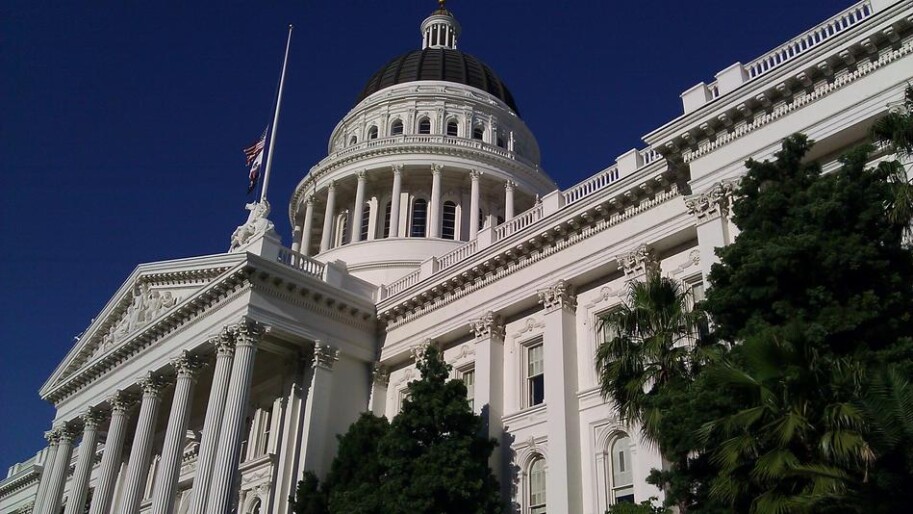With the crack of the gavel last Friday night, California’s 2021 legislative session came to a close. Overall, this was a lackluster year for climate action in the California legislature. The most ambitious climate bills — including a measure that would have set a net-negative emissions target, the most ambitious climate goal in the country — fell by the wayside. The state budget, however, does include significant investments into zero-emission transportation and allocations directed toward climate resilience, with the promise of additional funding in later years. But given this year’s record budget surplus, more should have been done to address the climate crisis.
Even in the face of a “code red warning for humanity,” oil and gas corporations and their allies once again combined to derail climate action in California. California has the tools and know-how to lead the world in combating the climate crisis, but we need politicians who are willing to stand up to the oil and gas industry.
With that in mind, here are some important highlights from this year’s legislative session, as well as what to look out for in 2022.
https://twitter.com/climatecampaign/status/1437468446015381507
Climate Targets and Timelines
The primary goal of The Climate Center’s Climate-Safe California campaign is to make California the first state in the nation to become carbon negative. That would mean we remove more climate pollution from the atmosphere than we release, which the latest science says is achievable by 2030. This year saw the introduction of two bills that focused on carbon targets, both of which were thwarted by oil and gas interests and their allies. The more ambitious of the two, SB 582 (Stern), would have made California the first state in the country with a net-negative emissions target. It also would have required an 80 percent reduction of statewide greenhouse gas emissions by 2030.
The Assembly also introduced its own climate targets bill, AB 1395 (Muratsuchi). Although it was not as ambitious as SB 582, aiming for carbon neutrality by 2045, AB 1395 was the last major climate bill standing at the end of session. The bill was again opposed by fossil fuel corporations and their allies, who succeeded in preventing the bill from passing off the Senate floor late on Friday night.
Despite setbacks in the legislature, our efforts to educate policymakers about the latest science and the need to act are beginning to change the conversation. Following a briefing by The Climate Center and leading California-based climate scientists earlier this summer, Governor Newsom issued an executive order directing the California Air Resources Board (CARB) to evaluate achieving carbon neutrality by 2035, a full decade faster than existing state policy requires. The fight to accelerate equitable climate action is certain to continue in 2022.
Energy and Resilience
Decarbonizing the energy sector is critical to a climate-safe future. A variety of energy bills were introduced this year, most of which were once again obstructed by oil and gas interests. SB 99 (Dodd), a measure sponsored by The Climate Center that would have supported grants and technical assistance for local governments to do clean energy resilience planning, died in the Assembly Appropriations Committee. A bill that would have streamlined permitting for rooftop solar installations, SB 617 (Wiener), was stymied in the Senate Appropriations Committee. SB 612 (Portantino), a measure tackling unfair charges for community choice aggregation customers, was not even given a hearing in the Assembly policy committee.
There is some good news, though. Two bills related to improving climate resilience in vulnerable communities — AB 1087 (Chiu) and AB 585 (L. Rivas) — stalled in the Assembly Appropriations Committee, but ideas from these bills were incorporated into the state budget. Hundreds of millions of dollars are now set aside to fund community resilience hubs and programs to mitigate the impacts of life-threatening heat.
Phasing Out Oil and Gas
Despite clear calls from scientists to phase out polluting fossil fuels, attempts to rein in California’s oil and gas production met heavy resistance this year. One of the most ambitious bills introduced, SB 467 (Wiener), would have imposed public health setbacks on oil and gas extraction operations and prohibited fracking. It failed to get out of its first policy committee hearing due to intense pressure from the fossil fuel industry and state building trades unions.
Two more modest but important bills did make it through to the governor’s desk. SB 47 (Limón) increased the amount of money a key regulatory agency, the California Geologic Energy Management Division (CalGEM), can spend on plugging abandoned oil and gas wells. AB 896 (Bennet) delegated additional authority to CalGEM to remediate idle oil and gas wells and expanded its ability to utilize tax liens to recover costs for the clean-up of idle wells. Both bills will help prevent pollution from abandoned wells and protect public health in frontline communities.
Transportation
The transportation sector, one of the largest climate polluters in California, saw mixed results in this year’s legislative session. Two companion bills, SB 726 (Lena Gonzalez) and AB 1389 (Reyes), would have required stronger coordination on zero-emission vehicle funding between state agencies and the modernization of a clean transportation grant program at the California Energy Commission. Both were put on pause this year in order to allow for time to negotiate the extension of a revenue stream for clean vehicle programs.
In the wins column, SB 372 (Leyva) authorizes the creation of a program to make it easier for fleets that utilize medium- and heavy-duty vehicles to transition to zero-emission technologies. SB 500 (Min) will ensure that beginning in 2031, autonomous light-duty vehicles will receive permits from the DMV only if they are zero-emission. The biggest victory for zero-emission transportation, however, came in the budget, where $3.9 billion was allocated over three years.
Sequestration and Natural and Working Lands
There is tremendous potential to store carbon in California’s soils and habitats. But up until now, there’s been little investment or planning relating to these nature-based solutions. The passage of SB 27 (Skinner) will result in the state adopting its first-ever sequestration target, as well as developing a natural and working lands strategy and facilitating the development of sequestration projects that utilize natural and working lands. And while not focused on natural and working lands, SB 596 (Becker) is a critical measure tackling the highly polluting concrete manufacturing sector, requiring the state to adopt a strategy to decarbonize that market and to set emissions reduction targets for the sector. Both bills are on their way to the governor’s desk.
Despite the successes of those two bills, several bills focused on natural and working lands did not make it through the process. AB 284 (R. Rivas), would have required CARB to update its 2022 Scoping Plan with goals for natural and working lands, as well as develop standardized methods to count emissions reductions associated with natural and working lands. This bill was put on pause on the Senate floor in the last days of the session. AB 125 (R. Rivas) would have put a $3 billion bond on the ballot, with the goal of funding a more climate-focused, resilient, and equitable food and farm system. It failed to clear its second policy committee hearing in the Assembly.
California’s Budget
California had a record-shattering $75 billion budget surplus this year. Although there were some significant investments made, policymakers could have done far more to prioritize the climate crisis with a surplus of this size. Budget allocations were broken up into investment “packages” that will be spread across three years, with the allocations for future years requiring appropriations in future legislative sessions.
The climate resilience package will see a total investment of $3.69 billion over three years, with $369.2 million allocated this year. This funding will go toward an array of programs, ranging from solutions to mitigate extreme heat to preparing for sea level rise. Another critical part of the resilience package is funding for nature-based solutions that will help safely store carbon in our natural and working lands. These programs will receive over half a billion dollars in the coming years. The Climate Center succeeded in helping to secure $25 million for resilience planning grants to local and regional governments as part of this fiscal year’s appropriation.
For its transportation package, the legislature allocated $2.7 billion this year toward zero-emission vehicles, with a strong focus on shifting trucks and buses to zero-emission technologies. These funds will also help in the deployment of the infrastructure needed to support the growth of the zero-emission vehicle population. In total, the transportation investment will reach $3.9 billion over three years.
The Road Ahead
While this was a disappointing legislative session, the conversation about how to act on climate is changing. The rapidly shifting realities of climate change — from catastrophic wildfires to simmering heat domes to unprecedented floods — are making the once-abstract warnings from scientists very real.
Oil and gas interests continue to stand in the way of progress, but their hold on Sacramento is slipping. To erode their influence once and for all, we need to band together with our allies across the state to form a united movement in support of truly ambitious climate policies. It’s vital for each and every one of us to show legislators that we’ve got their backs when they stand up to the oil and gas industry. At the same time, we can send a message to legislators that are on the fence that we’ll stand with them when they take tough votes in favor of climate action.
Thank you for your support this past year, and to everyone who took action for a climate-safe future for all. Be sure to check The Climate Center’s legislative tracker as we gear up to fight for bold, equitable climate policies in 2022.


